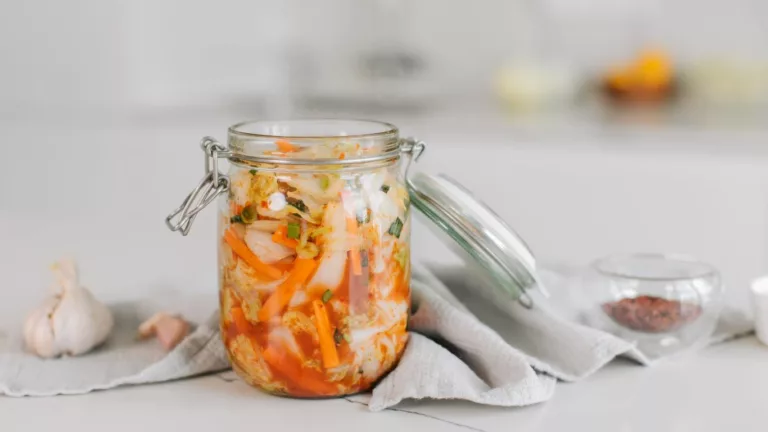Enjoy Delicious GERD Safe Spring Recipes for Symptom Relief
Spring is a season of renewal and fresh flavors, but if you’re managing GERD (gastroesophageal reflux disease), finding delicious meals that don’t trigger your symptoms can feel like a real challenge. Based on my years working as a Medical Assistant in a Gastroenterology Clinic, I’ve seen firsthand how tricky it is to balance tasty recipes with GERD-safe ingredients. That’s why I’m excited to share some GERD safe spring recipes that are gentle on your stomach yet bursting with seasonal goodness. These dishes use fresh, wholesome ingredients designed to minimize acid reflux while still satisfying your taste buds.
Why Choosing GERD Safe Spring Recipes Matters

Spring is all about lighter meals, fresh veggies, and bright flavors, which can be a perfect match for GERD-friendly cooking — if you know what to avoid. Acidic, spicy, and fatty foods are common reflux triggers, but luckily, spring produce often lends itself well to gentle, soothing meals. From tender asparagus to mild herbs and fresh herbs, the season gives us a lot to work with.
In my experience helping patients navigate GERD symptoms, I’ve noticed a few key patterns: keeping meals low in acid, avoiding heavy fats, and incorporating natural anti-inflammatory ingredients can make a huge difference. This not only helps reduce flare-ups but also promotes better digestion overall. So, embracing spring recipes tailored for GERD isn’t just about avoiding discomfort — it’s about feeling energized and nourished.
What Makes a Recipe GERD Safe? Understanding the Basics

Before diving into the recipes, let’s quickly break down what makes a dish safe for GERD sufferers. Knowing this will help you tweak your favorite spring meals and keep flare-ups at bay:
Key Ingredients to Embrace
- Low-acid fruits and vegetables: Think melon, bananas, leafy greens, zucchini, and peas.
- Whole grains: Oats, brown rice, and quinoa are gentle on your digestive tract.
- Lean proteins: Skinless chicken, turkey, fish, and plant-based proteins like tofu.
- Herbs and mild spices: Basil, parsley, ginger, and turmeric can add flavor without the burn.
Ingredients to Avoid or Limit
- Citrus and tomatoes: These can cause irritation and worsen reflux symptoms.
- Fatty and fried foods: Heavy fats slow digestion and relax the lower esophageal sphincter (LES), the muscle that keeps acid in your stomach.
- Spicy seasonings: Chili powder, black pepper, and hot sauces often trigger discomfort.
- Caffeine and carbonated drinks: Both can aggravate symptoms and should be consumed sparingly.
Tips From a Medical Assistant: Making GERD Safe Spring Meals Work for You

One thing I’ve learned from daily interaction with patients managing GERD is that individual tolerance varies. What works for one person might not for another. This means experimenting with these spring recipes and customizing them to your needs is key. Here are some practical tips I always recommend:
- Keep portion sizes moderate. Large meals increase stomach pressure and acid reflux risk.
- Eat slowly and mindfully. Taking your time helps digestion and reduces symptoms.
- Prepare meals with gentle cooking methods. Steaming, baking, and grilling are great options to avoid excess fat and acid production.
- Stay upright after eating. Give your body time to digest by avoiding lying down right after meals.
In the next sections, I’ll share some flavorful, easy-to-make spring recipes that check all these boxes. They are designed to be both comforting and safe for your GERD, letting you enjoy the best the season has to offer without the worry of flare-ups.
Delicious GERD Safe Spring Recipes to Try Today

After talking about the essentials of what makes a recipe GERD friendly, let’s get to the fun part: cooking! From my time assisting patients in a gastroenterology clinic, I learned that easy-to-prepare, fresh meals not only support digestive health but also boost overall well-being. Here are some of my favorite GERD safe spring recipes that celebrate the season’s best flavors while keeping your symptoms in check.
1. Asparagus and Quinoa Salad with Fresh Herbs
This vibrant salad is light, refreshing, and packed with nutrients. Asparagus is a spring superstar that’s gentle on the stomach and full of fiber, which helps digestion. Quinoa adds a protein boost and a satisfying texture.
- Ingredients: 1 cup cooked quinoa, 1 bunch steamed asparagus (cut into bite-sized pieces), 1/4 cup chopped parsley, 1/4 cup chopped basil, 1 tbsp olive oil, 1 tsp lemon zest (optional and only if tolerated), salt and pepper to taste.
- Directions: Combine cooked quinoa with steamed asparagus and herbs. Drizzle with olive oil and gently toss. If you can handle a little acid, a touch of lemon zest adds brightness — but skip it if it triggers reflux.
This dish is so simple but feels fresh and satisfying. In the clinic, I often told patients that starting with easy recipes like this helps build confidence in cooking GERD-safe meals.
2. Baked Herb-Crusted Chicken with Steamed Zucchini
Lean protein is key in managing GERD symptoms, and chicken is a great choice. Baking keeps things light, and pairing with mild zucchini rounds out a gentle meal.
- Ingredients: 2 skinless chicken breasts, 1 tbsp olive oil, 2 tsp dried oregano, 1 tsp dried thyme, salt and pepper, 2 cups sliced zucchini, 1 clove garlic minced (optional, use sparingly if tolerated).
- Directions: Preheat oven to 375°F (190°C). Rub chicken with olive oil, oregano, thyme, salt, and pepper. Bake for 25-30 minutes until cooked through. Meanwhile, steam zucchini until tender and toss lightly with a pinch of salt.
This meal is a personal favorite — simple, filling, and reflux-friendly. It’s one of those dishes I’d often recommend to patients looking to enjoy a hearty dinner without triggering symptoms.
Small Adjustments That Make a Big Difference

Beyond choosing the right ingredients, the way you prepare and eat your food can hugely impact GERD management. One thing I always emphasize is that it’s not just about what you eat but also how you eat. Here are a few subtle but effective adjustments to keep in mind:
Mind Your Meal Timing and Portions
Eating smaller, more frequent meals rather than big, heavy ones can really help reduce reflux. When you eat too much at once, your stomach works overtime, which can cause acid to back up into your esophagus. Try to keep portions moderate, and avoid eating within 2-3 hours before bedtime.
Cook With Care
Steaming, baking, boiling, or grilling are all excellent cooking methods for GERD-safe meals. These methods reduce the need for excess fats, which tend to worsen reflux. From my experience, patients who switch from fried or greasy foods to baked or steamed options usually notice a big difference in their symptoms.
Keep Hydrated—but Wisely
Water is your friend, but carbonated drinks and caffeinated beverages like coffee and tea can aggravate reflux. I often suggest my patients stick to plain water or herbal teas that don’t contain peppermint or citrus, as those can trigger symptoms.
Spring Smoothies That Are Gentle on GERD

Smoothies are a fantastic way to enjoy spring fruits and veggies without irritating your stomach. Plus, they’re quick to make and easy to digest. Here’s a recipe I often recommend:
- Ingredients: 1 ripe banana, 1/2 cup cooked oats (cooled), 1/2 cup spinach, 1/2 cup oat milk (or any non-dairy milk), 1 tsp honey (optional).
- Directions: Blend all ingredients until smooth. The banana and oats provide soothing, low-acid content, while spinach adds nutrients without acidity.
I’ve seen many patients surprised at how this simple smoothie helps calm their digestive system, especially when symptoms flare. It’s a great breakfast or snack option when you want something quick but GERD-safe.
More Flavorful GERD Safe Spring Recipes to Savor

Continuing with some of my favorite spring-inspired recipes, let’s talk about soups and light entrées that are kind to your digestive system. From my time working in the gastroenterology clinic, one thing I can’t stress enough is the power of warm, soothing meals that don’t overwhelm your stomach. When I saw patients struggling with GERD symptoms, I often encouraged them to try recipes like these that are balanced, nourishing, and easy on the esophagus.
3. Creamy Spring Vegetable Soup (Dairy-Free)
Soups are comforting, hydrating, and perfect for easing digestive discomfort, especially when made with gentle ingredients. This creamy spring vegetable soup uses coconut milk instead of dairy to avoid reflux triggers while keeping that rich, velvety texture.
- Ingredients: 2 cups chopped zucchini, 1 cup peeled and chopped carrots, 1 cup peeled potatoes, 1/2 cup chopped celery, 2 cups low-sodium vegetable broth, 1 cup light coconut milk, 1 tsp fresh thyme, salt and pepper to taste.
- Directions: In a large pot, simmer the vegetables in the broth until tender (about 15-20 minutes). Use an immersion blender to puree until smooth. Stir in the coconut milk and thyme. Warm through, season with salt and pepper, then serve.
I personally love making a big batch of this soup on weekends to have handy during the week. It’s incredibly gentle but still satisfying and full of fresh spring veggies.
4. Grilled Salmon with Steamed Green Beans and Carrots
Lean fish like salmon is an excellent protein source that’s usually well tolerated by GERD sufferers. Plus, it’s rich in omega-3 fatty acids, which have anti-inflammatory properties that might help reduce reflux-related irritation.
- Ingredients: 2 salmon fillets, 1 tbsp olive oil, salt, and pepper, 1 tsp fresh dill, 1 cup steamed green beans, 1 cup steamed baby carrots.
- Directions: Brush salmon with olive oil, sprinkle with salt, pepper, and dill. Grill over medium heat for 4-5 minutes per side or until flaky. Serve with steamed green beans and carrots tossed lightly with olive oil.
When I recommend this dish to patients, I always mention how quick and easy it is to prepare but also how much it nourishes your body without aggravating reflux symptoms.
How to Customize These Recipes for Your Unique GERD Needs

One thing that’s clear from my work in the clinic is that GERD symptoms and triggers vary quite a bit from person to person. What might be perfectly safe for one individual could cause discomfort for another. This is why I always encourage a personalized approach to your diet.
Here are some tips based on real patient experiences to help you customize these spring recipes and make them work for you:
- Swap ingredients you don’t tolerate: For example, if you find olive oil too rich, try using a small amount of avocado oil or cooking spray instead.
- Adjust herbs and spices: Stick to mild, fresh herbs like basil and parsley rather than dried or spicy varieties if those upset your stomach.
- Test small portions: When trying a new recipe, start with a small serving to see how your body reacts before making a full meal.
- Keep a food diary: Tracking what you eat alongside any symptoms can be a powerful tool in identifying your personal triggers.
In my conversations with patients, many found that making small, gradual changes rather than drastic diet overhauls helped them stick to GERD-safe eating habits long term.
Final Thoughts on Enjoying GERD Safe Spring Recipes
Embracing a spring menu that’s safe for GERD doesn’t mean giving up flavor or satisfaction. As I’ve seen through my hands-on experience in the medical field, the key lies in choosing fresh, low-acid ingredients, cooking thoughtfully, and listening to your body’s responses. These recipes highlight the best spring produce and show how you can enjoy the season’s bounty without the fear of reflux.
Remember, managing GERD is a journey, and incorporating delicious, soothing meals is a big step towards feeling better every day. With the right balance and a bit of experimentation, you can create a springtime menu that nourishes you inside and out.
References
- American Gastroenterological Association
- National Institute of Diabetes and Digestive and Kidney Diseases
- Centers for Disease Control and Prevention – Digestive Diseases
Disclaimer
This article is intended for informational purposes only and does not substitute professional medical advice. If you have persistent or severe GERD symptoms, please consult a healthcare provider for diagnosis and personalized treatment. Dietary changes should be made in consultation with your doctor or a registered dietitian, especially if you have other medical conditions.

Camellia Wulansari is a dedicated Medical Assistant at a local clinic and a passionate health writer at Healthusias.com. With years of hands-on experience in patient care and a deep interest in preventive medicine, she bridges the gap between clinical knowledge and accessible health information. Camellia specializes in writing about digestive health, chronic conditions like GERD and hypertension, respiratory issues, and autoimmune diseases, aiming to empower readers with practical, easy-to-understand insights. When she’s not assisting patients or writing, you’ll find her enjoying quiet mornings with coffee and a medical journal in hand—or jamming to her favorite metal band, Lamb of God.






